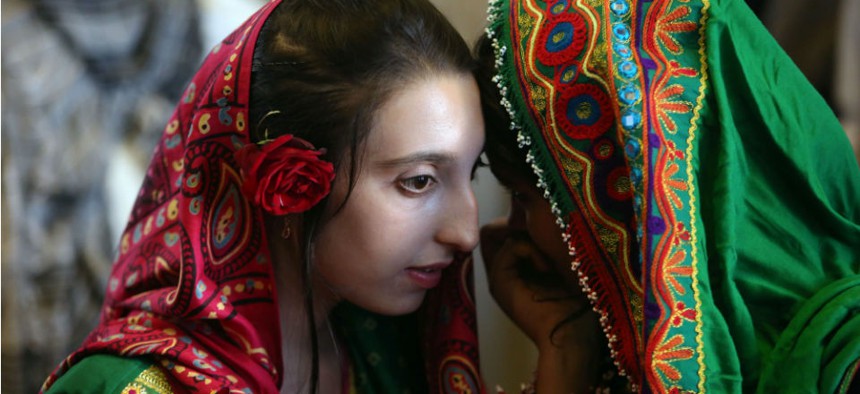It's Hard to Tell Whether U.S. Spending to Elevate Women in Afghanistan Is Working
Defense, State and USAID are unable to link their efforts to gains by women, watchdog finds.
Improving the status of women has been a central challenge in Afghanistan since the 2001 overthrow of the Taliban. But current American efforts to boost access to jobs, health care, education and child care suffer from poor tracking of funds and an inability of U.S. agencies to connect their programs to demonstrated improvements in that war-torn country, a watchdog reported on Thursday.
The Defense and State departments, along with the U.S. Agency for International Development, have spent least $64.8 million on 652 projects, programs and initiatives to support Afghan women in fiscal 2011 through 2013, the Special Inspector General for Afghanistan Reconstruction said. “But none of the three agencies can readily identify the full extent of their projects, programs, and initiatives supporting Afghan women or the corresponding amount of funding expended on those efforts,” auditors found, and there is “no comprehensive assessment available to confirm" whether reported gains by women in recent years are the result of U.S. efforts.
SIGAR warned that the absence of more detailed information will limit the agencies' ability to make informed policy, program and funding decisions, especially as the number of U.S. personnel on the ground decreases. “Although the agencies monitor and evaluate most of their individual efforts at the program or project-level, none of the agencies has compiled this information into an agency-level assessment of the impact these efforts have had on the lives of Afghan women, in accordance with best practices in managing and assessing government programs," it said.
State and USAID reported spending an additional $850.5 million on 17 projects, but could not identify the specific amount of funds within these projects that directly supported Afghan women, the IG said.
Despite past progress reported by the agencies in measures such as girls going to school and construction of women’s shelters, the Afghan people continue “to face barriers recruiting women into the Afghan National Security Forces,” the report said. It cited “a lack of programs and facilities, such as child care, latrines, and dormitories, to support women in the ANSF; adequate career paths for women; training that would provide females with skills equal to their male colleagues; and a general understanding of the need for acceptance of females in the forces.”
What’s more, reported cases of violence against women in 2013 rose by 25 percent compared with 2012, according to data SIGAR cited from the Afghanistan Independent Human Rights Commission.
The watchdog recommended that State, the Defense Department and USAID report within 90 days on new efforts to “develop and implement agency-wide mechanisms to track the number and funding—both obligated and disbursed—of projects, programs, and initiatives” to support Afghan women. It also called upon the agencies to use existing data for an agency-wide assessment of progress and develop a plan with timeframes.
The agencies partially agreed, but in some cases argued that existing data systems are sufficient.
The report is addressed to Secretary of State John Kerry, Defense Secretary Chuck Hagel and USAID Administrator Rajiv Shah, along with the U.S. ambassador P. Michael McKinley and Central Command Commander Gen. Lloyd J. Austin III.
NEXT STORY: How the Fight Against Ebola Shaped 2014




